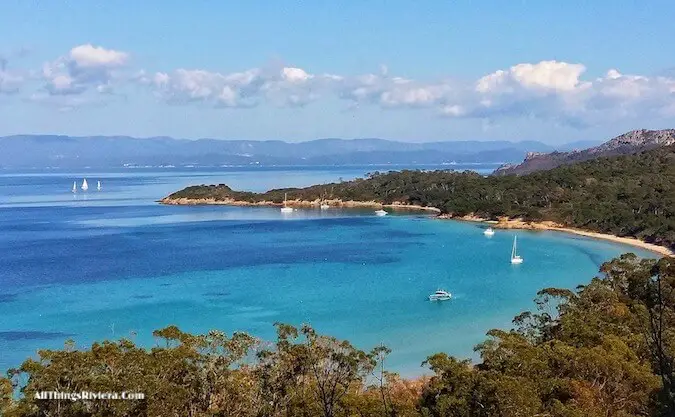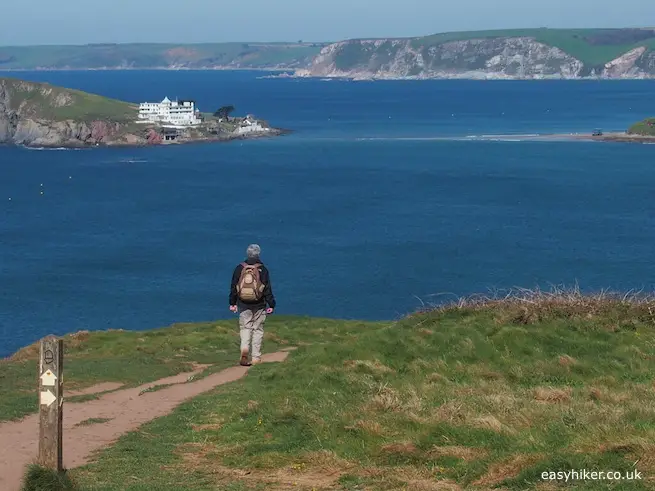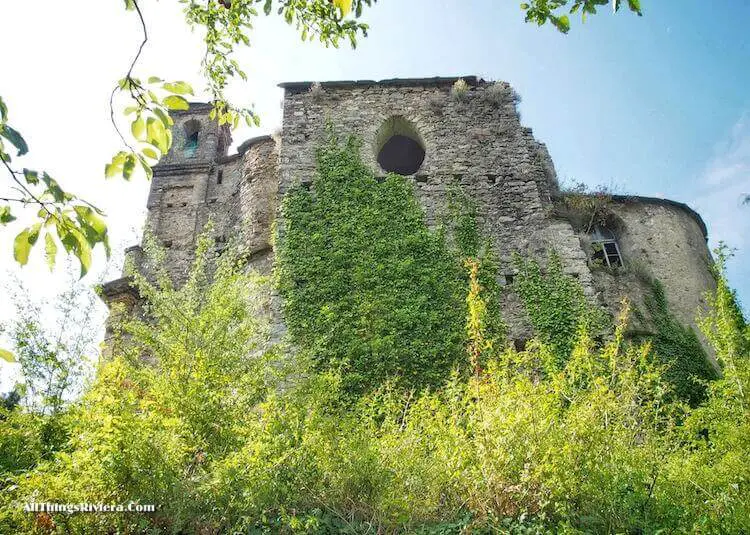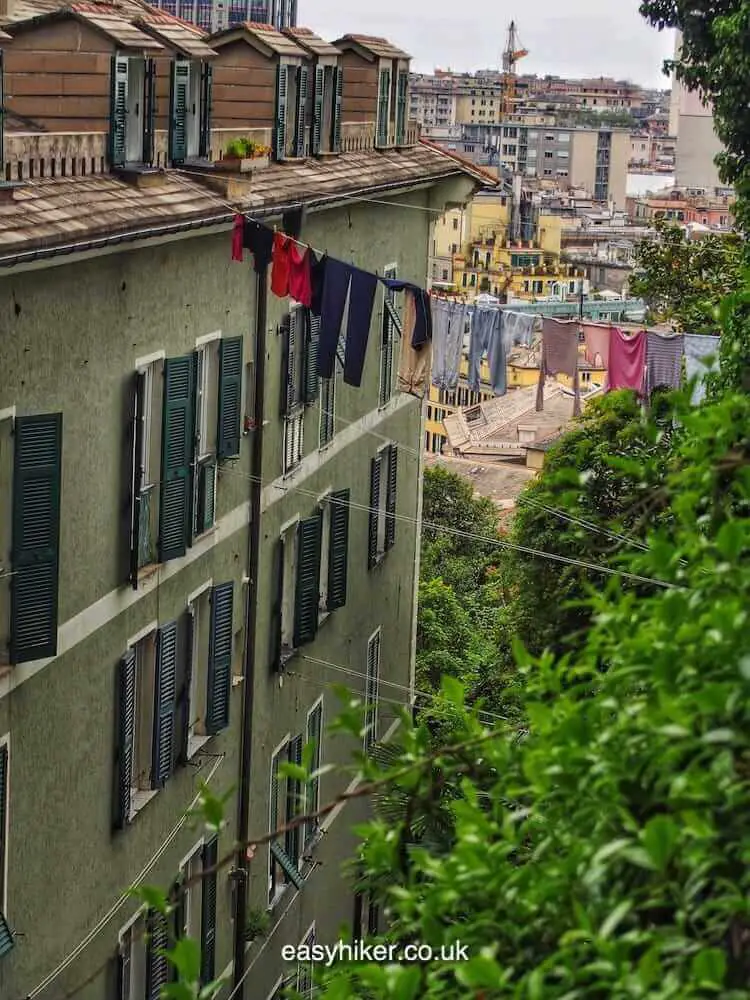Manchester was the world’s first industrial town, the cradle of the global manufacturing economy. Today‘s Manchester, however, is no museum: busy and forward-looking, it seems prouder of its soccer clubs and its modern-day prosperity – a rare thing in Britain’s troubled north – than of any past glories.
There is little in the streets of the modern city centre that would provide clues about the town’s unique history. One level down, however, it’s a different story.
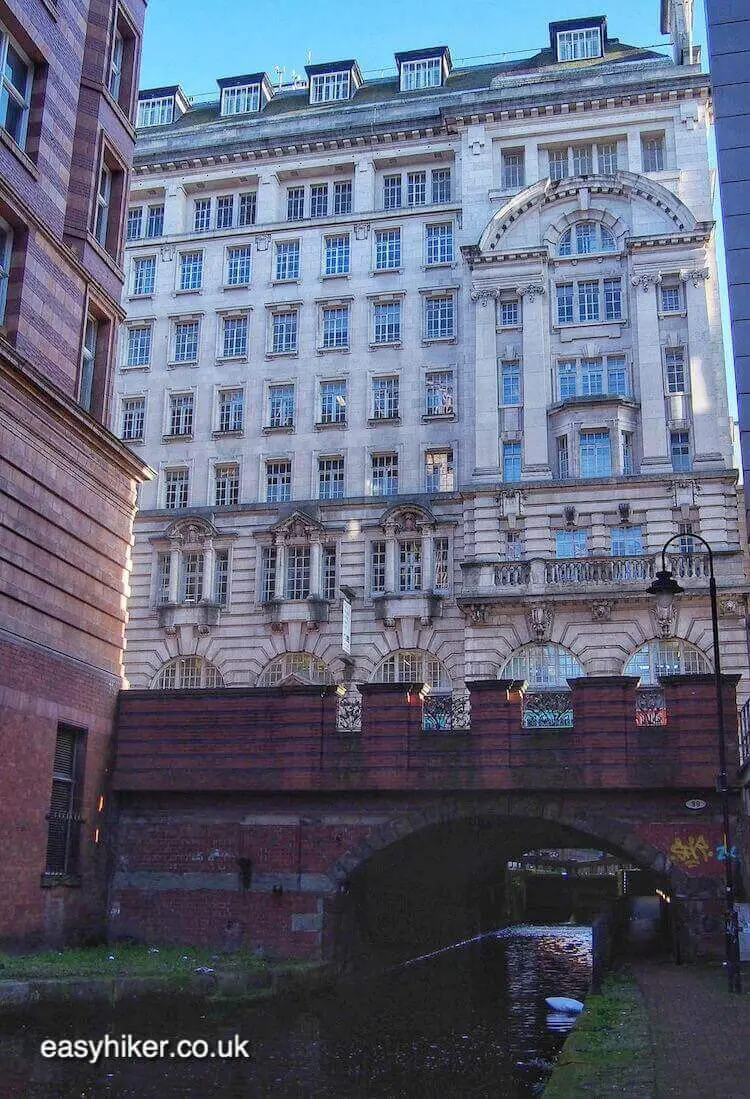
It is in the city’s subterranean canal network a couple of meters below street level where the glory of Manchester past along its canals makes its presence felt: shadowy and dreamlike, like a city’s restless soul.
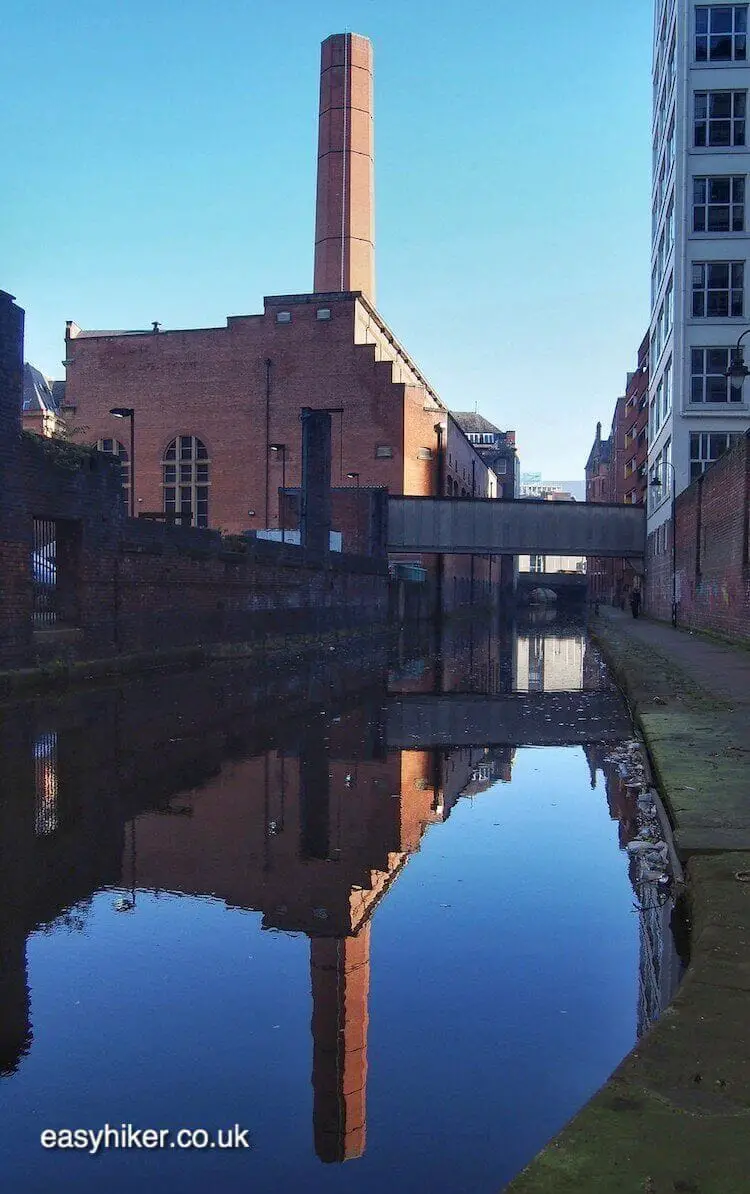
Canals were very important in the first stages of industrialisation. In the absence of railways and functioning road networks, transport on land was hugely difficult – for people trying to travel from A to B, but even more so for freight.
Rivers provided the only feasible way of hauling raw materials and finished goods over long distances. And when these rivers did not flow where economic logic recommended they should, a little bit of human help could often provide a solution.
In many places, these old canals are well preserved today: their story did not end when they were out priced by the railways, and they continued to attract businesses for many years. Not least because, for many industries, it was always good to have a cheap source of fresh water at hand.
Canals only fell into serious neglect in the years after WWII – and even then, not for long: soon, their potential as urban leisure areas was discovered, and they became much-loved features of our post-industrial townscapes.
Canals provide pictures of our cities’ history that are frozen not so much in time but across various times: collages of unexpected, almost surreal juxtapositions …
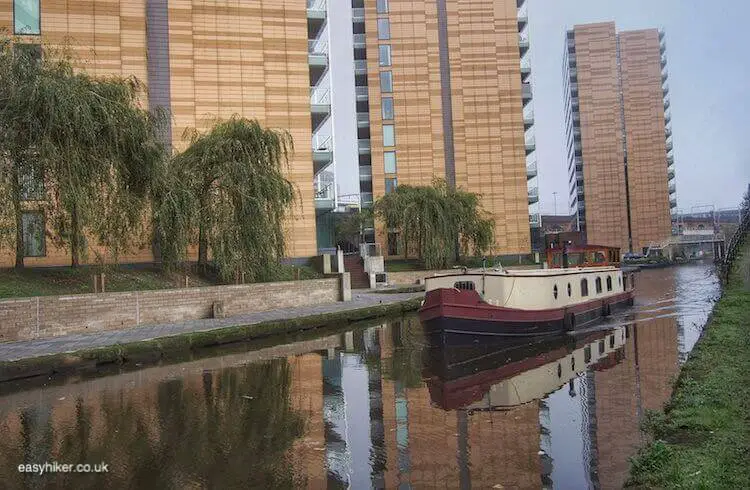
… the picturesque …
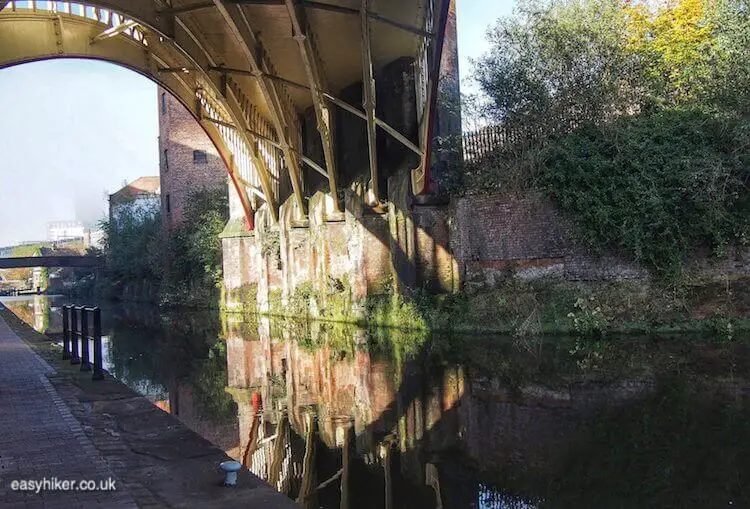
… and the fascinatingly dystopian.
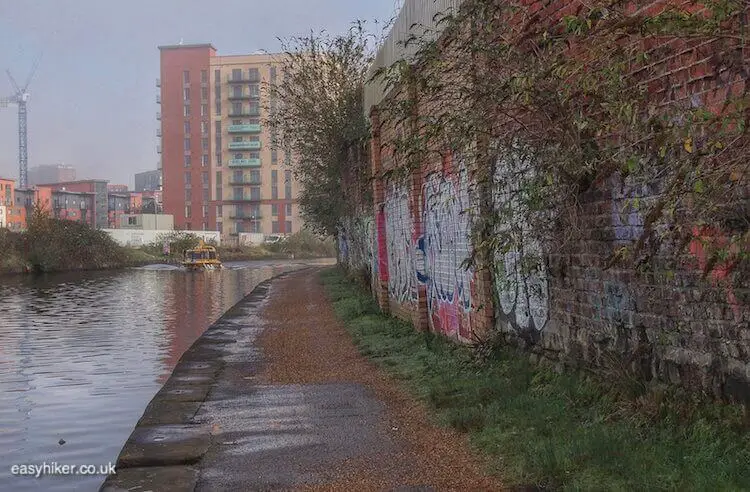
Glimpse the Glory of Manchester Past Along Its Canals
We start our exploration of Manchester’s canal network – appropriately enough – on Canal Street, which is nowadays the centre of the city’s nightlife and lined with pubs and bars.
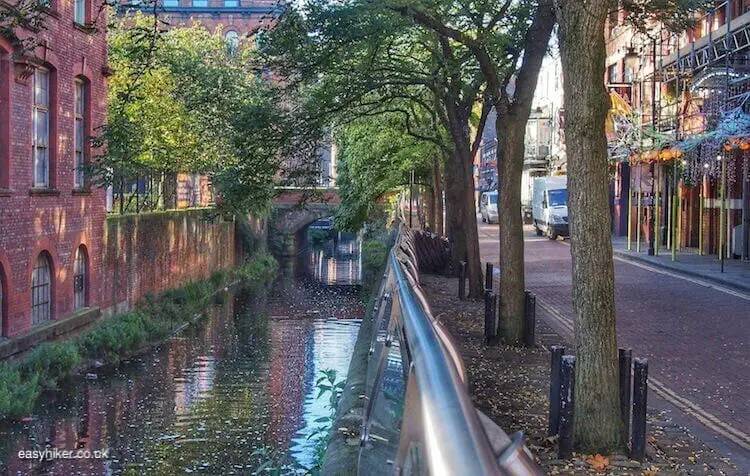
Proceeding westwards, walk down the stairs just before the crossing with Princess Street and continue via the underpass. This is the final stretch of the Rochdale Canal, built in the 18th century during the heyday of British canals.
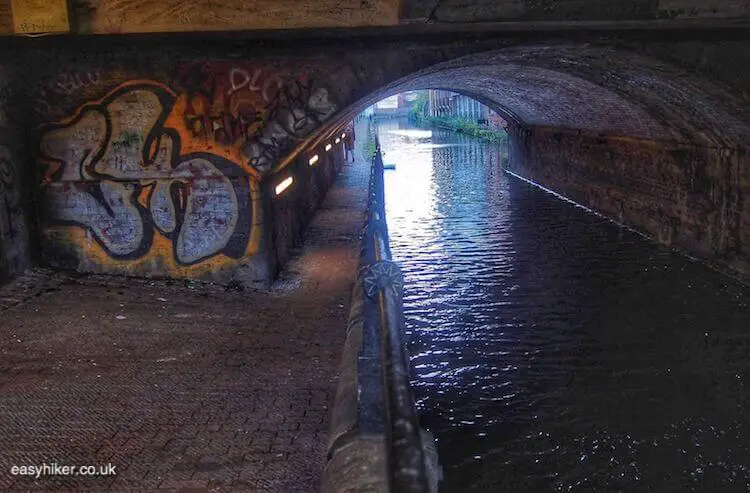
During this period, the Rochdale Canal was the main highway between Lancashire and Yorkshire, the two industrial areas on either side of the mountain ridge that divides Britain into a western and an eastern part.
The canal reached its peak capacity in 1845 when nearly 1 million tons were shipped through its waters, mainly pulled by horses that trotted on the towpath.
After half an hour or so, you will reach Deansgate Locks and the Castlefield basin …
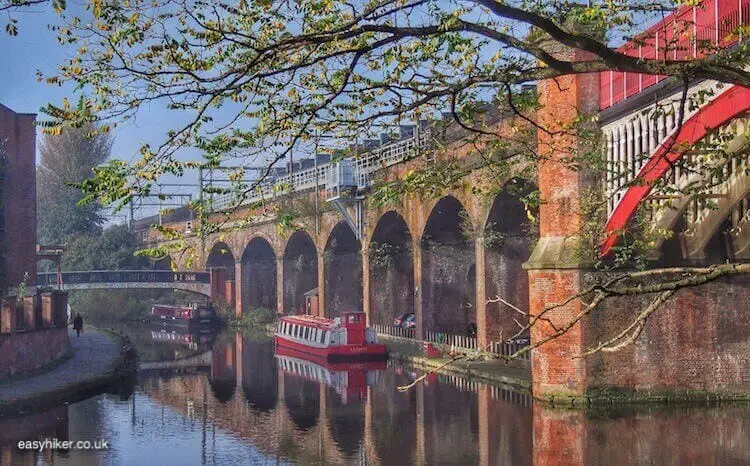
… where several waterways meet.
Snoop around a little, walking down this stretch and that, perhaps even stopping for a drink on the outside terrace of the local coffee shop if the (notoriously foul) Manchester weather allows …
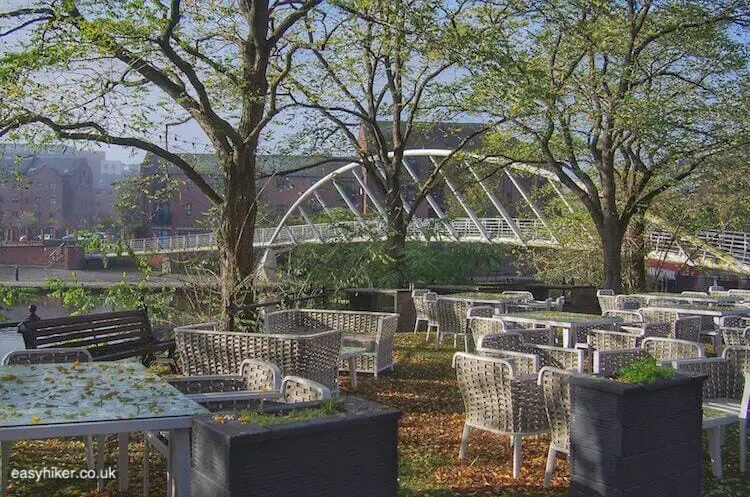
… before crossing the bridge and continuing your walk down the Bridgewater Canal.
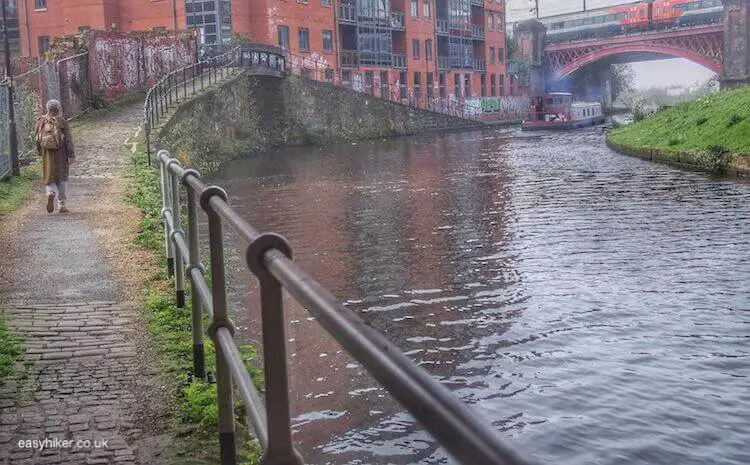
The Bridgewater Canal was constructed in 1761, at the dawn of the industrial age. It is often called the “first true canal“, since it resolved one early problem of the industrial revolution: how to provide the steam engines in the Northwest with fuel (i.e. coal) from the coal mines in the Northeast.
Continue down a relatively bleak stretch of the canal …
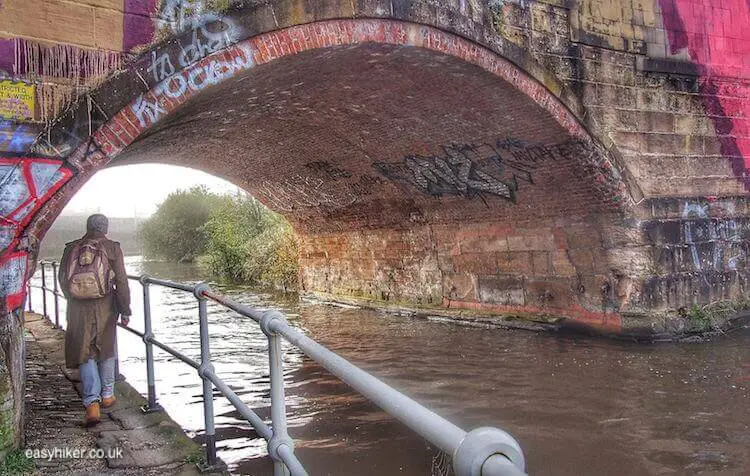
… until a second waterway comes into sight on our right hand side.
This is the Irwell River that will soon – together with the Bridgewater Canal – merge into the Manchester Ship Canal, which belongs to the last generation of artificial waterways.
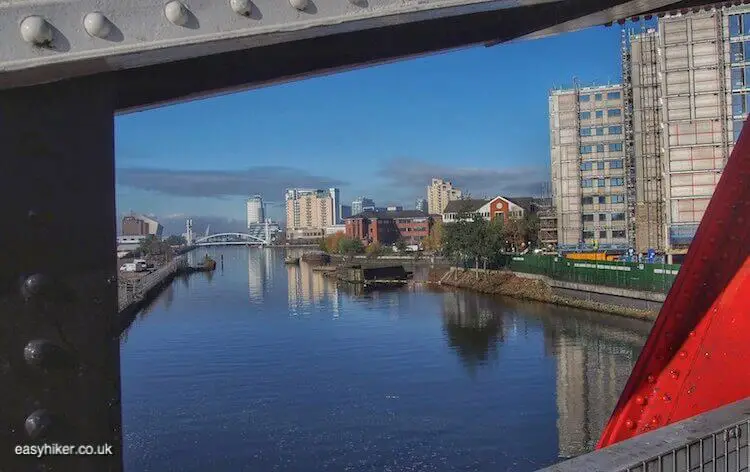
The Ship Canal was completed in 1894 and eventually turned Manchester – a city 35 miles inland – into Britain’s third-largest harbour. Manchester’s decision to build the Ship Canal had followed a long decline of its economic fortunes, seen at the time as a consequence of the city’s relative isolation from the maritime trade network.
This is the sort of attitude that Manchester has always prided itself on: when there’s a crisis, you need to do something to resolve it, not wait for an Act of God or government hand-outs.
The construction of the Ship Canal required an Act of Parliament which was pushed through against heavy resistance from Liverpool and her lobby: Liverpool was, at the time, Britain’s main west coast harbour. The bitter rivalry between these two cities has persisted ever since and still exists today on many different levels.
Cross the bridge across the Ship Canal and turn left – after a quarter mile or so – into Merchants Quay for the Salford Quays.
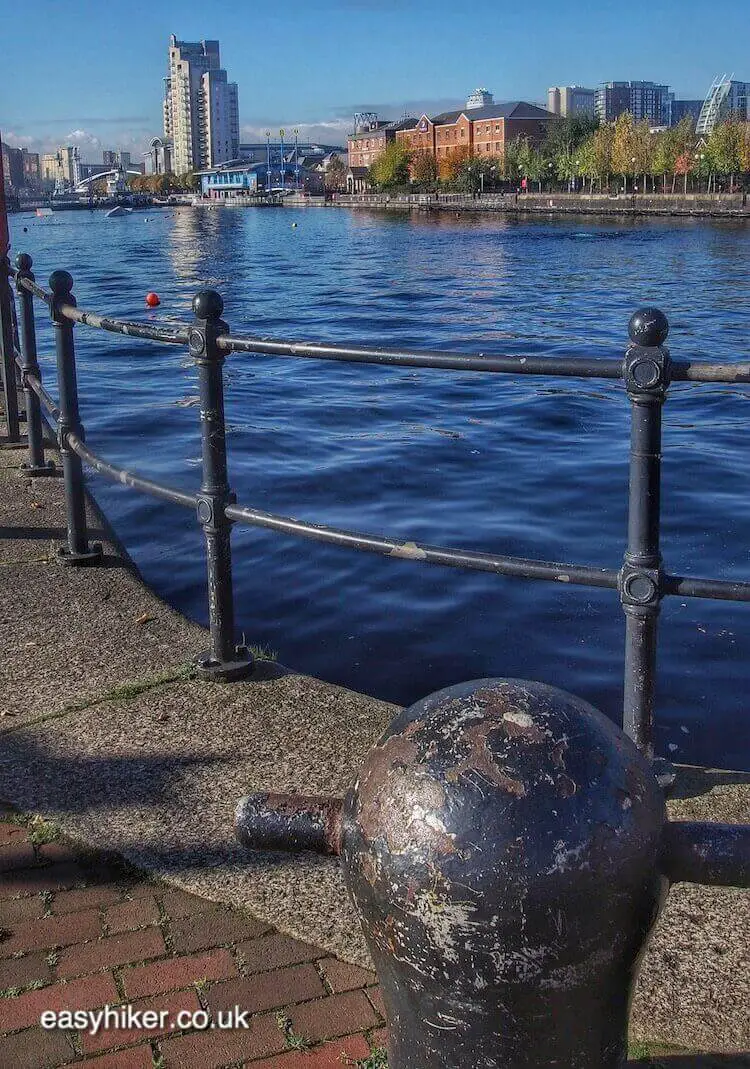
The Salford Quays are Manchester’s redeveloped dockyards, featuring public buildings and museums (you may have spotted the Lowry art gallery from the bridge) as well as offices and retail facilities.
Media City UK a little further up road accommodates many of the BBC’s production facilities (including the broadcaster’s entire sports and children’s TV operations) that moved here from London in 2011 (amid much wailing and gnashing of teeth from the relocated London-based staff).
Just opposite the basin, you will find Salford Quays light railway station from where you can catch a Metrolink train back to central Manchester.

